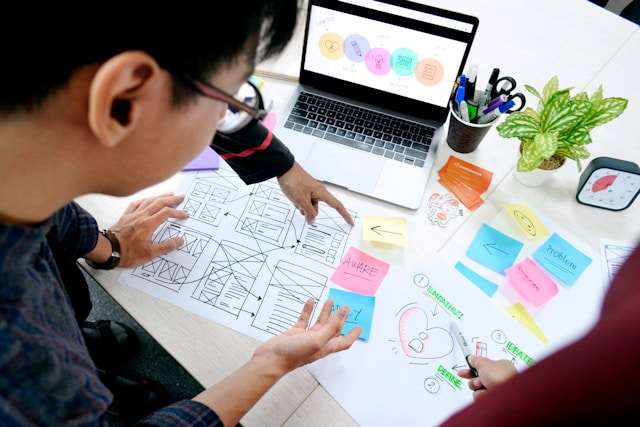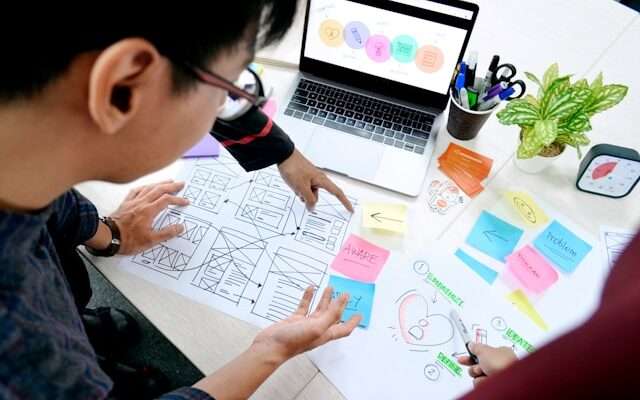Explore whether Is UX Design Stressful , uncover common stressors, and discover effective stress management techniques to thrive in this dynamic field.
Introduction
UX design, short for user experience design, is a field that focuses on creating intuitive and enjoyable experiences for users interacting with digital products. As the demand for seamless user experiences grows, the role of UX designers has become increasingly important. But is UX design stressful? This article delves into the various aspects of UX design, examining potential stressors and offering strategies to manage them.
Understanding UX Design
What is UX Design?
UX design encompasses a range of activities aimed at enhancing user satisfaction by improving the usability, accessibility, and pleasure provided in the interaction with a product. It involves understanding user needs, designing solutions, and continuously testing and iterating to achieve the best user experience.
Importance of UX Design
Effective UX design is crucial for the success of digital products. It can significantly impact user retention, customer satisfaction, and overall brand reputation. Companies invest heavily in UX design to ensure their products meet and exceed user expectations.

The Role of a UX Designer
Core Responsibilities
A UX designer’s primary responsibilities include conducting user research, creating personas, designing wireframes and prototypes, and performing usability testing. They work closely with developers, product managers, and other stakeholders to ensure the final product aligns with user needs and business goals.
Essential Skills for UX Designers
Successful UX designers possess a blend of technical skills, creativity, and empathy. Key skills include proficiency in design tools (like Sketch, Figma, and Adobe XD), understanding of user research methods, and strong communication abilities to articulate design decisions.
The Work Environment in UX Design
In-House vs. Agency Work
In-house UX designers work within a single company, focusing on its products. They benefit from a deeper understanding of the brand and its users but may face limitations in creative freedom. Agency UX designers work with various clients, offering a diverse range of projects but often dealing with tighter deadlines and varying client expectations.
Freelance UX Design
Freelancing offers UX designers flexibility and independence. However, it also brings challenges such as managing multiple clients, ensuring steady work, and handling the business aspects of freelancing.
Common Stressors in UX Design
Tight Deadlines
Meeting project deadlines is a significant stressor for UX designers. Tight timelines can pressure designers to deliver high-quality work quickly, often leading to long hours and increased stress.
Client Expectations
Managing client expectations is crucial in UX design. Clients may have unrealistic demands or a limited understanding of the design process, making it challenging to deliver satisfactory results without stress.
Balancing Creativity and Functionality
Striking a balance between creative design and functional usability can be stressful. Designers must ensure their work is aesthetically pleasing while meeting user needs and technical requirements.
Continuous Learning and Adaptation
The field of UX design is constantly evolving, with new tools, techniques, and trends emerging regularly. Designers need to commit to continuous learning to stay relevant, which can be both exciting and stressful.
Dealing with Feedback and Criticism
Receiving and incorporating feedback is a critical part of the UX design process. While constructive criticism can improve designs, negative or unclear feedback can be a source of stress.
The Impact of Technology on UX Design Stress
Keeping Up with Technological Advancements
Rapid technological advancements mean UX designers must continually update their skills and knowledge. Staying current with the latest design trends, tools, and user expectations can be a significant source of stress.
Tools and Software
Mastering various design tools and software is essential for UX designers. Learning new tools and adapting to updates can add to the workload and stress.
Work-Life Balance in UX Design
Strategies for Maintaining Balance
Maintaining a healthy work-life balance is crucial for managing stress in UX design. Setting boundaries, prioritizing tasks, and taking regular breaks can help designers stay productive without burning out.
Company Culture and Support
A supportive company culture that values work-life balance can significantly reduce stress levels. Companies that encourage open communication, provide professional development opportunities, and offer mental health support create a healthier work environment for UX designers.
Stress Management Techniques for UX Designers
Time Management
Effective time management can alleviate stress by helping designers meet deadlines without feeling overwhelmed. Techniques such as time blocking, prioritizing tasks, and using project management tools can enhance productivity.
Mindfulness and Relaxation Techniques
Incorporating mindfulness practices like meditation, deep breathing, and regular physical exercise can help UX designers manage stress and maintain mental well-being.
Professional Support Networks
Connecting with other UX professionals through support networks and communities can provide valuable advice, resources, and emotional support. Networking events, online forums, and mentorship programs are excellent ways to build these connections.
Building a Supportive Work Environment
Creating a supportive work environment involves fostering open communication, encouraging collaboration, and recognizing and rewarding efforts. A positive workplace culture can significantly reduce stress levels for UX designers.
The Positive Aspects of UX Design
Creative Fulfillment
Despite the challenges, UX design offers immense creative fulfillment. Designers have the opportunity to solve complex problems and create meaningful experiences that positively impact users’ lives.
Impact on User Experience and Satisfaction
The work of UX designers directly influences user satisfaction and engagement. Seeing users benefit from well-designed products can be highly rewarding and motivating.
Career Growth Opportunities
The demand for skilled UX designers continues to grow, offering numerous career advancement opportunities. Continuous learning and professional development can lead to exciting roles and increased job satisfaction.
Personal Stories and Experiences
Interviews with Experienced UX Designers
Hearing from experienced UX designers about their career journeys, challenges, and stress management strategies can provide valuable insights and inspiration for those new to the field.
Case Studies of Successful Projects
Analyzing case studies of successful UX design projects can offer practical examples of overcoming stressors and achieving exceptional results. These stories highlight best practices and innovative solutions.
Common Misconceptions about UX Design
Myths about the Stress Levels
There are several misconceptions about the stress levels in UX design. Some believe it to be a highly stressful job, while others see it as purely creative and enjoyable. The reality lies somewhere in between, with stress levels varying based on individual circumstances and work environments.
Differences Between UX and UI Design Stress
While UX and UI design are closely related, the stressors in each role can differ. Understanding these differences can help professionals in both fields manage their stress more effectively.
FAQs about UX Design Stress
What is the most stressful part of UX design?
How do UX designers handle tight deadlines?
Is freelancing in UX design more stressful than in-house work?
Can company culture impact stress levels in UX design?
What are some effective stress management techniques for UX designers?
How does continuous learning affect stress in UX design?
Conclusion
UX design can be a fulfilling yet challenging career. By understanding the common stressors and implementing effective stress management techniques, UX designers can thrive in their roles and create impactful user experiences. Embracing continuous learning, seeking support, and maintaining a healthy work-life balance are key to managing stress and achieving long-term success in UX design.
Call to Action
If you’re considering a career in UX design or looking to enhance your skills, remember that managing stress is an integral part of your professional journey. Stay informed, seek support, and keep exploring new ways to improve your work and well-being.




